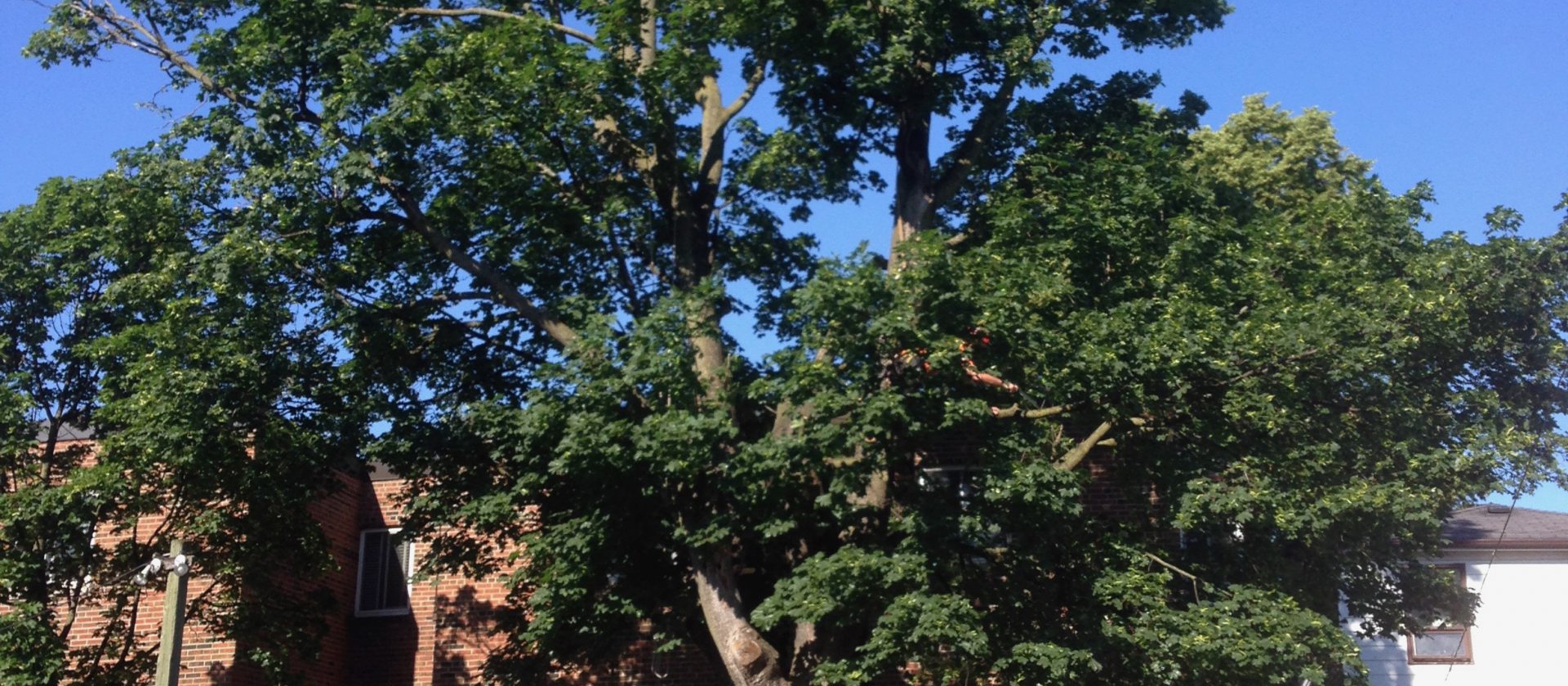In the City of Toronto, tree permits are required for a variety of reasons to ensure the preservation of our urban forest. The most common reasons homeowners in Toronto require a tree permit are to remove an unwanted tree on private property, to protect trees during construction, and to prune a tree on city property.
Private Tree Removal
Most backyard trees and trees close to houses are considered private trees by the City of Toronto. If you are unsure if your tree is considered private or city owned, give us a call and we can help you figure it out.
Once application packages are submitted to the city, there is usually a 1 to 2 month waiting period for a response. Sometimes the city requires additional information, and Cardinal Tree Care will act as the applicant on your behalf to clarify or relay this information.
The city of Toronto requires a 1:1 replacement ratio for private tree removal permits. Replacement trees must be 50mm calliper (about 15ft. tall) and they must be native shade trees, such as Maples and Oaks. If you don’t have enough space on your property, there is a Replacement Tree Fee ($583) that is paid to the city to plant a tree somewhere else in the city.
More information about tree removals can be found here.
More information about Arborist Reports can be found here.
City Trees
City trees are usually the trees at the front of a property, either along the boulevard or within a few feet of the sidewalk. As these trees play an important role in the first impression of a property, it is important for them to look their best.
All city trees require a permit for pruning, so an application package must be submitted.
Permit Exemption
Permit exemptions are reserved for only the most severe cases of hazardous trees. Trees that are completely dead, terminally diseased, or infected with the Emerald Ash Borer qualify for a permit exemption. Arborist Reports are usually required in these instances. However, a full application package and replacement tree is not necessary.
To find out if your tree would qualify for a permit exemption, we would be glad to have a look and let you know.
Other
Permit exemptions are reserved for only the most severe cases of hazardous trees. Trees that are completely dead, terminally diseased, or infected with the Emerald Ash Borer qualify for a permit exemption. Arborist Reports are usually required in these instances. However, a full application package and replacement tree is not necessary.
If you have any other questions or are unsure which category your tree would fall into, give us a call for more information.






